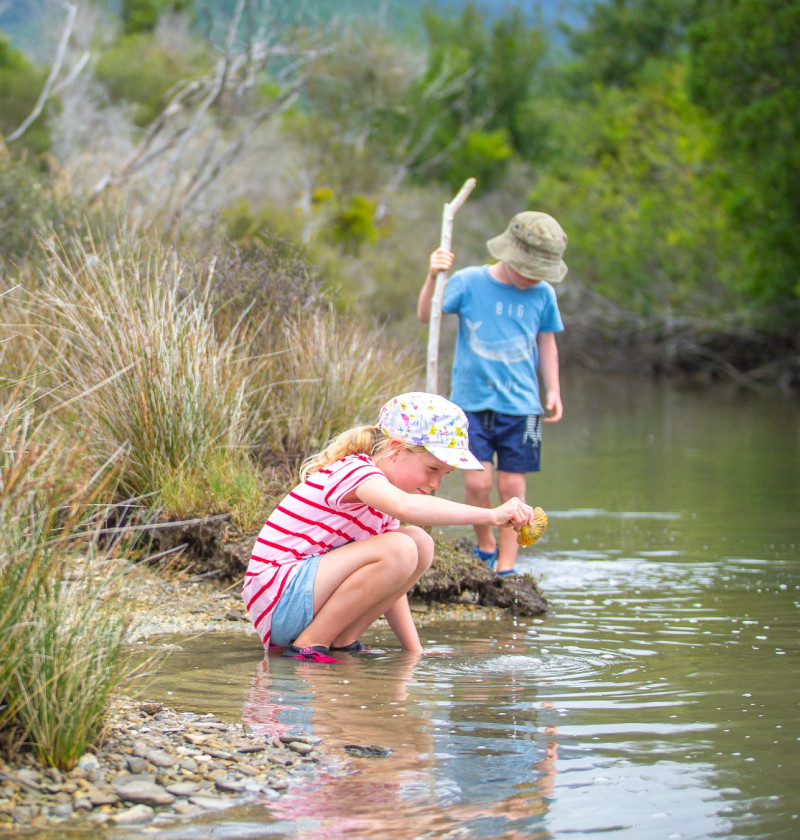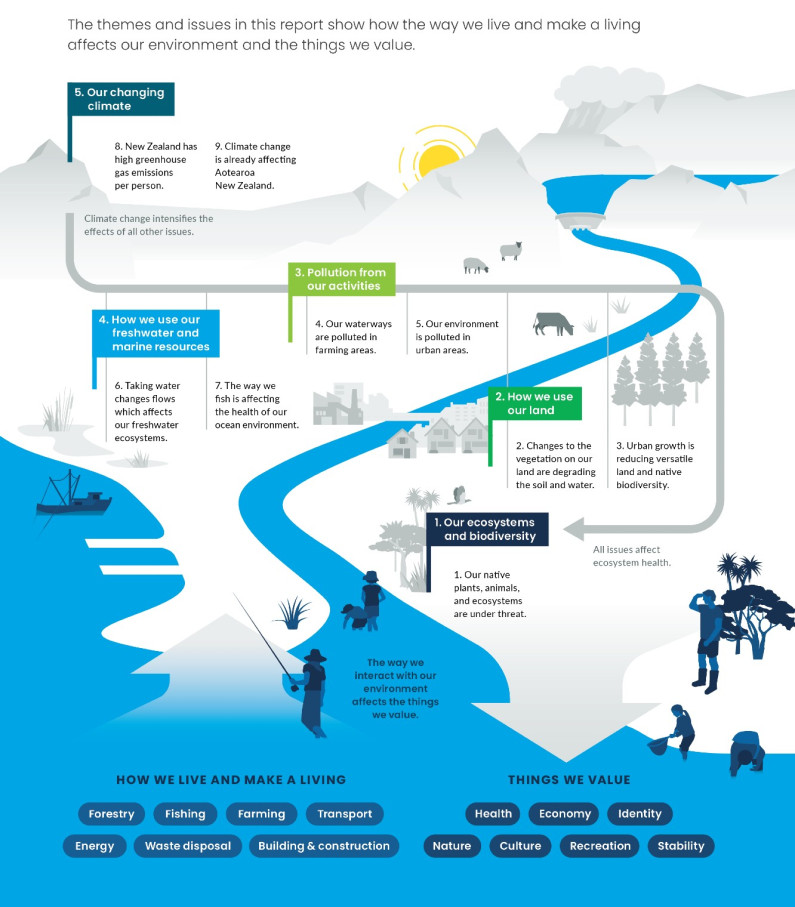Aotearoa New Zealand

Our land and sea are unique and very special, having evolved so distinctly and separately from the rest of the world. From the time our ancestors first stepped onto its shores, the land of the long white cloud has provided nourishment, protection, and resources to its inhabitants. People have become part of the environment and shaped it, modifying the land to grow food, building houses, and establishing settlements, roads, and infrastructure.

The relationship and connection New Zealanders have with the environment goes well beyond the goods and services we receive from it, like food, fuel, and clean water. Our environment is where we stand, our tūrangawaewae – where we live, learn, work and earn a living, play, and socialise. It is our home and our identity, and the foundation of our national culture and tradition.
For Māori as tangata whenua – people of the land – that connection is indivisible from the health of Papatūānuku, the Earth Mother.
Te ao Māori (the Māori world view) has an important place in environmental reporting in New Zealand. It ensures the unique connection of tangata whenua is respected and brings a way of thinking that helps us all see ourselves as a part of, not apart from, the environment.
The changes we have made (and continue to make) to this rich landscape are having profound effects on our environment. Some parts of our environment are in good shape, others less so. How we go forward from here is up to us all.
This summary is an overview of Environment Aotearoa 2019, which is part of the Ministry for the Environment and Stats NZ’s legislated environmental reporting programme. Every six months we produce a report focused on a different ‘domain’ – air, freshwater, marine, atmosphere and climate, and land. Every three years we produce a ‘synthesis’ report – bringing together the data and findings from across the domain reports to help us step inside and view our environment as a whole, in all its complexity.
Environment Aotearoa 2019 uses five themes to look into nine priority issues – those that matter most to the current state of our environment.
An 'issue' is a change in the state of the environment that is (partly) caused by human activities (pressures) and has consequences (impacts).
While not suggesting any responses (which are out of scope under the report’s governing legislation), Environment Aotearoa 2019 provides evidence to enable an open and honest conversation about what we have, what we are at risk of losing, and where we can make changes.
For the full picture on the health of our environment and more detail on each issue, see Environment Aotearoa 2019.
Throughout this summary report, you’ll see references and links to various environmental indicators. These are metrics that help us assess the state of the environment. Each indicator that appears in Environment Aotearoa 2019 has an accompanying web page and a dataset that is free to access.
Environment Aotearoa 2019 presents the most important issues that affect the health of our environment today.
Four criteria were established to help describe the sense of significance and urgency of the issue:
An independent panel of scientists verified the selection process to ensure the criteria were appropriately applied to the issues. The relevance of the nine issues to mātauranga Māori, kaitiakitanga, and other cultural values was also considered by Māori researchers and practitioners.
The priority issues presented here are not an exhaustive list of all the pressures our environment faces. Some have an impact on the environment but are not featured here as they do not rank as highly against the criteria as other issues. Mining for example, is not included because of its localised nature.
As an issue is defined as a change in the state of the environment, some environmental problems are not included such as plastic waste which is considered as a pressure.


Read the long description for Environment Aotearoa 2019 themes and issues
The themes and issues in this report show how the way we live and make a living affects our environment and he things we value.
The way we interact with our environment affects the things we value.

Aotearoa New Zealand
April 2019
© Ministry for the Environment